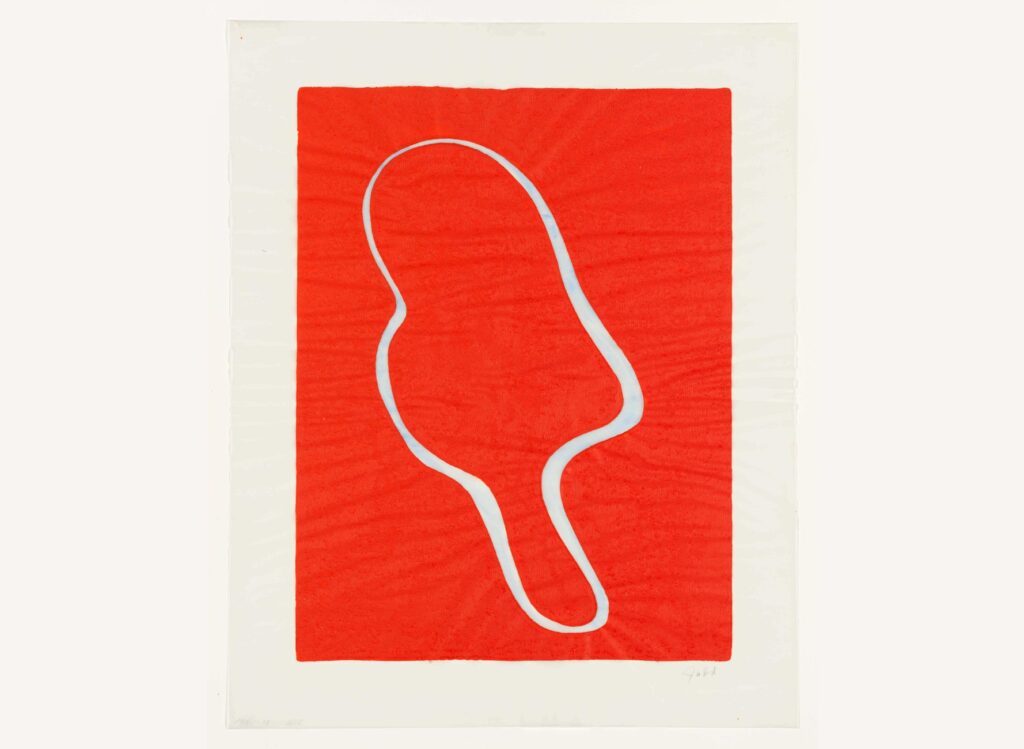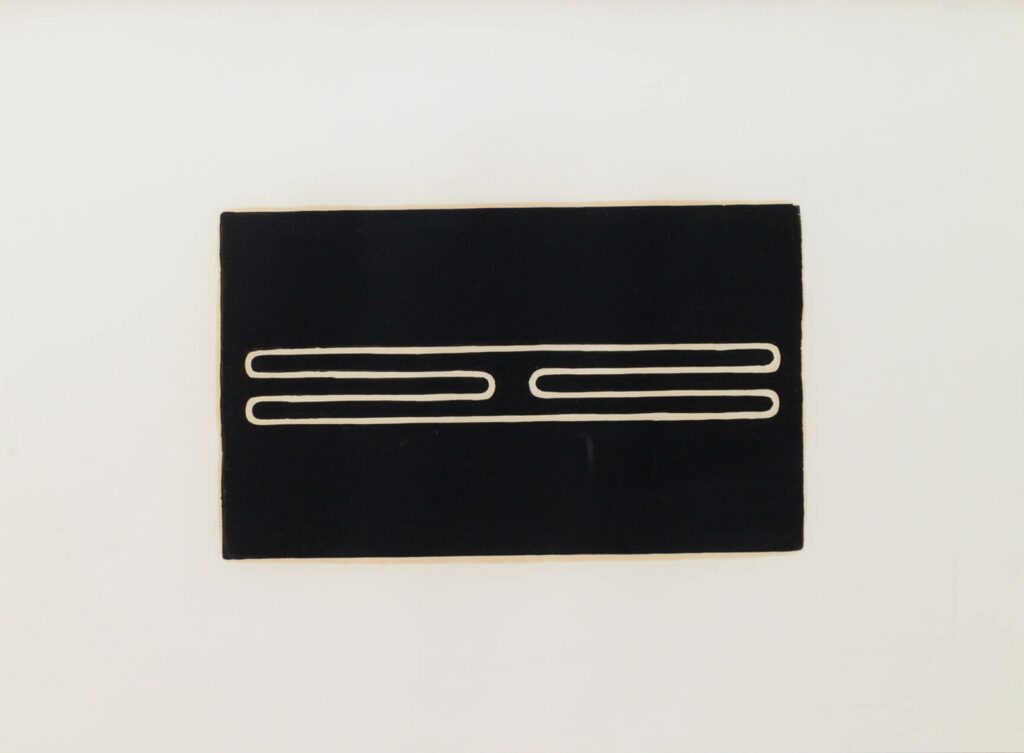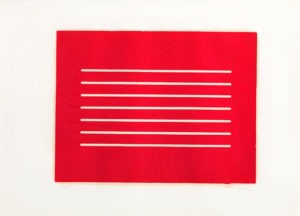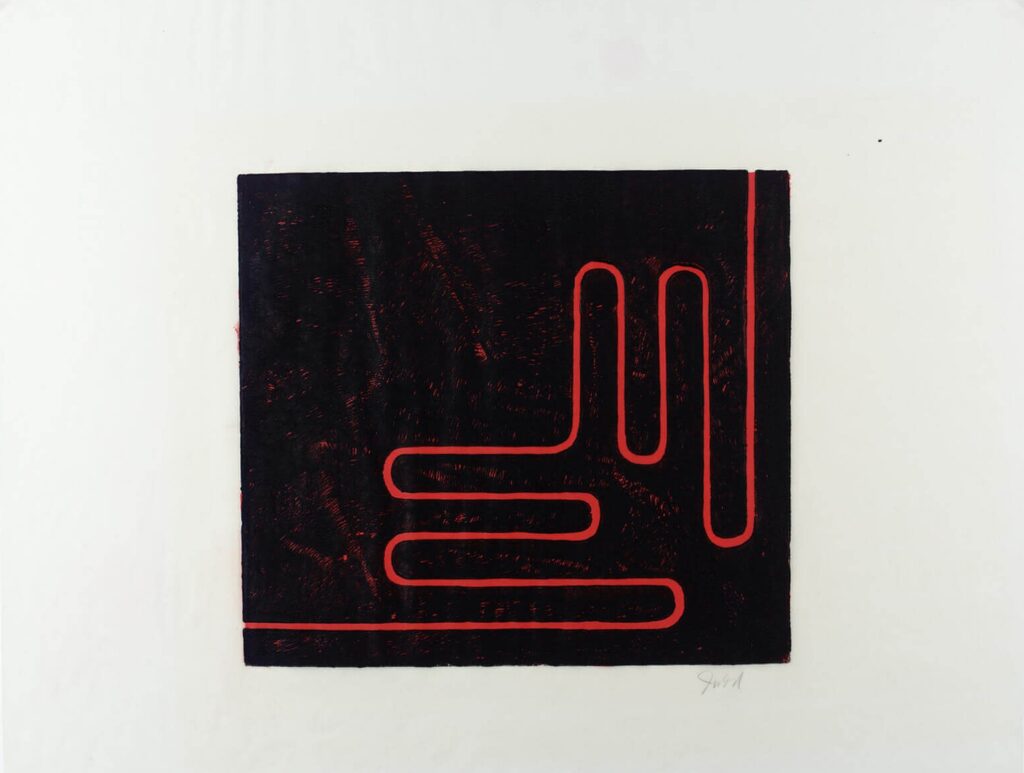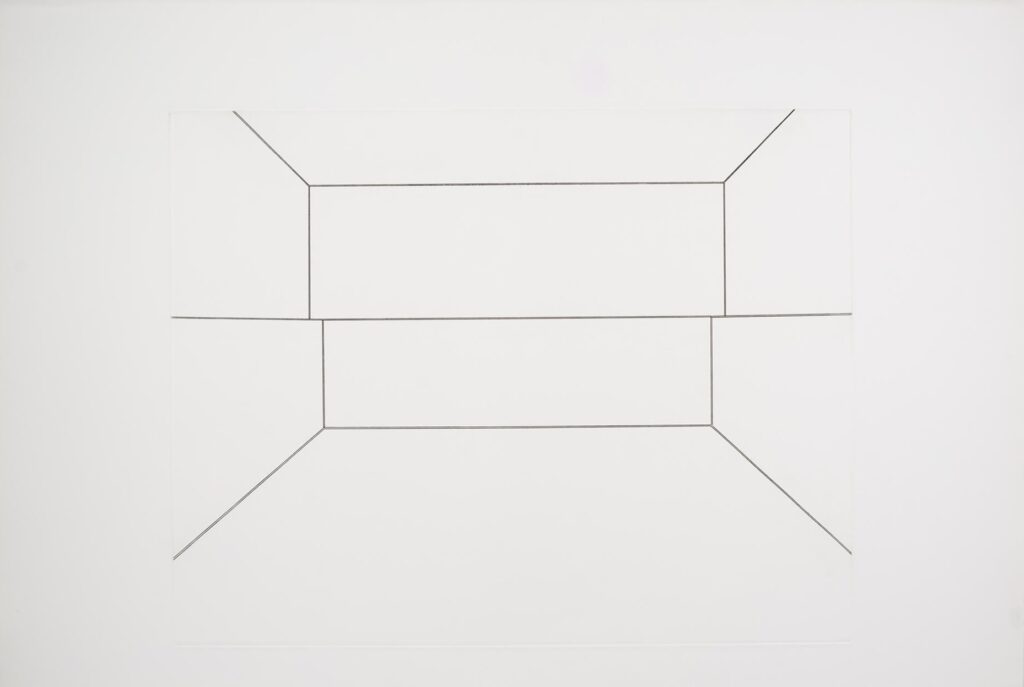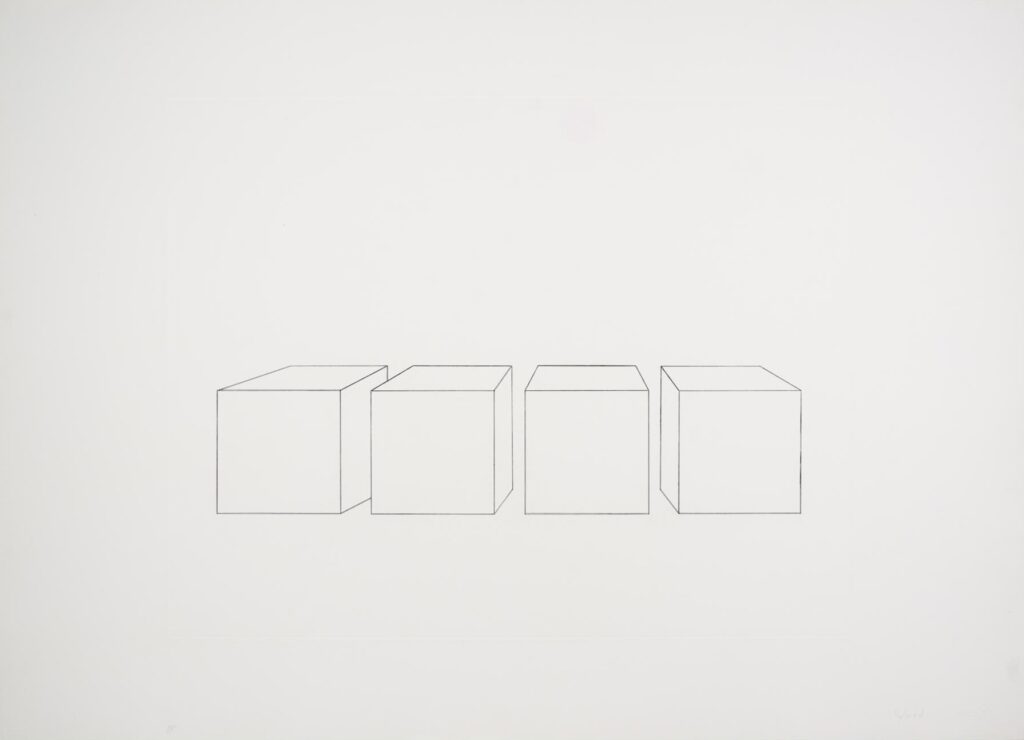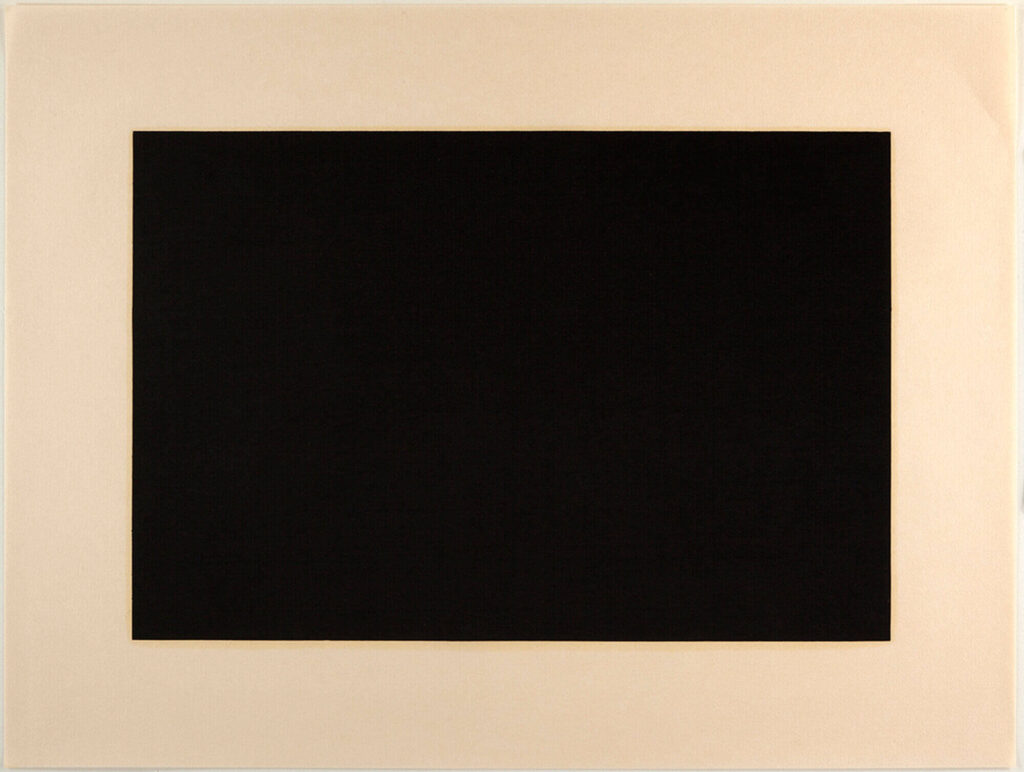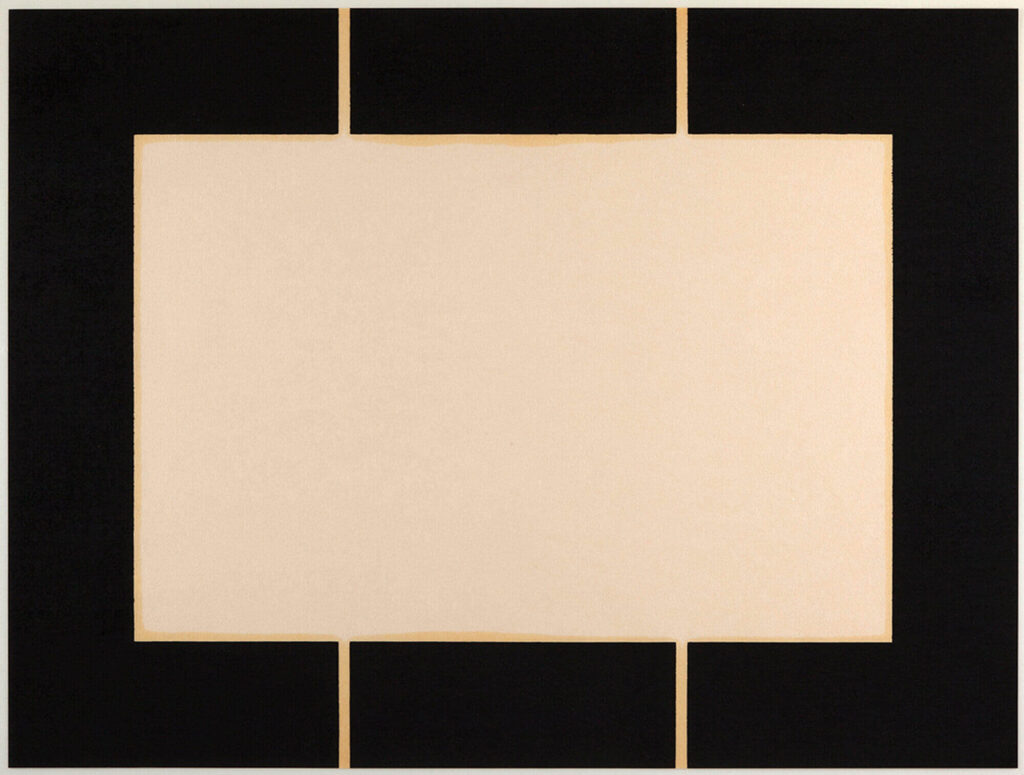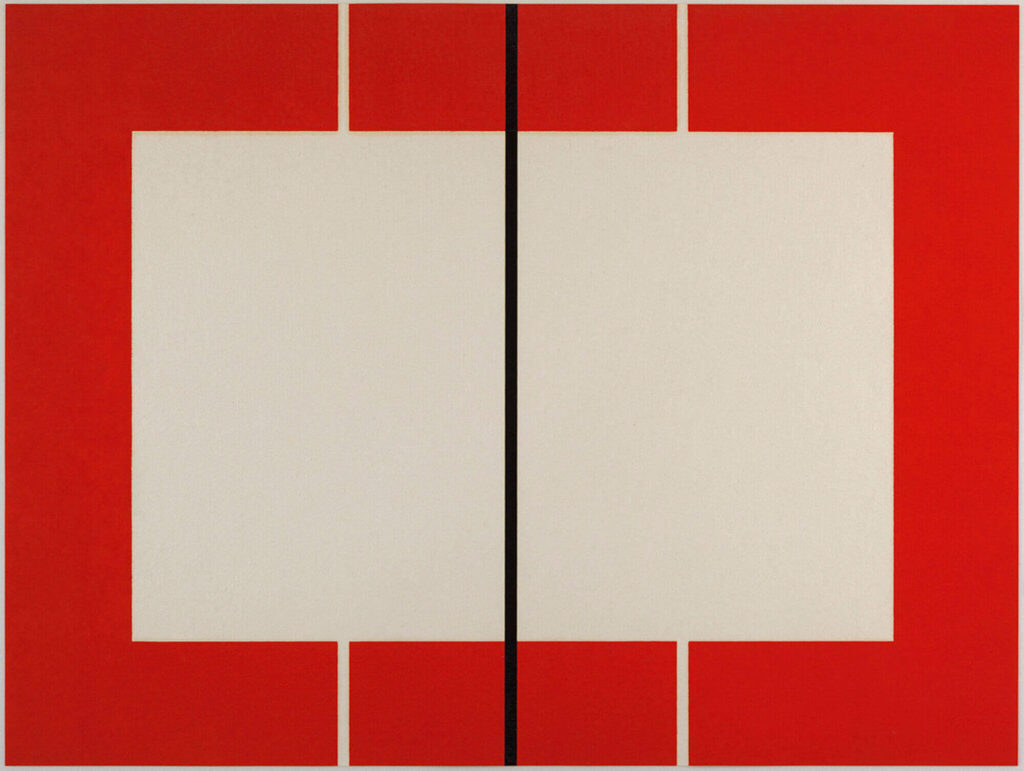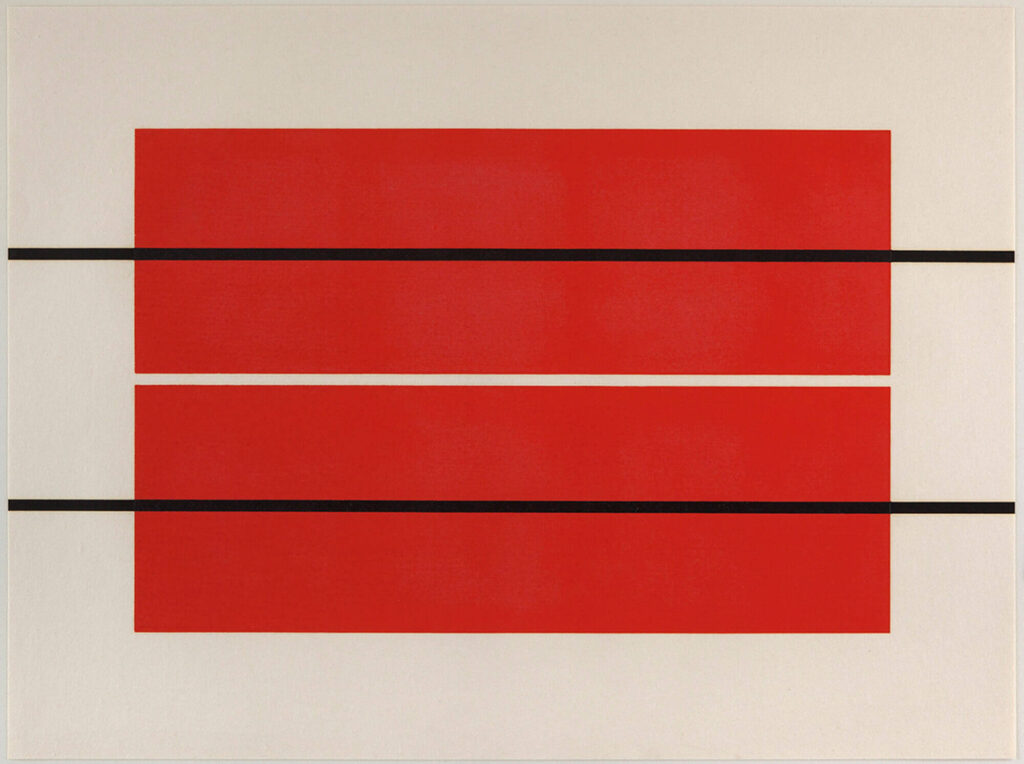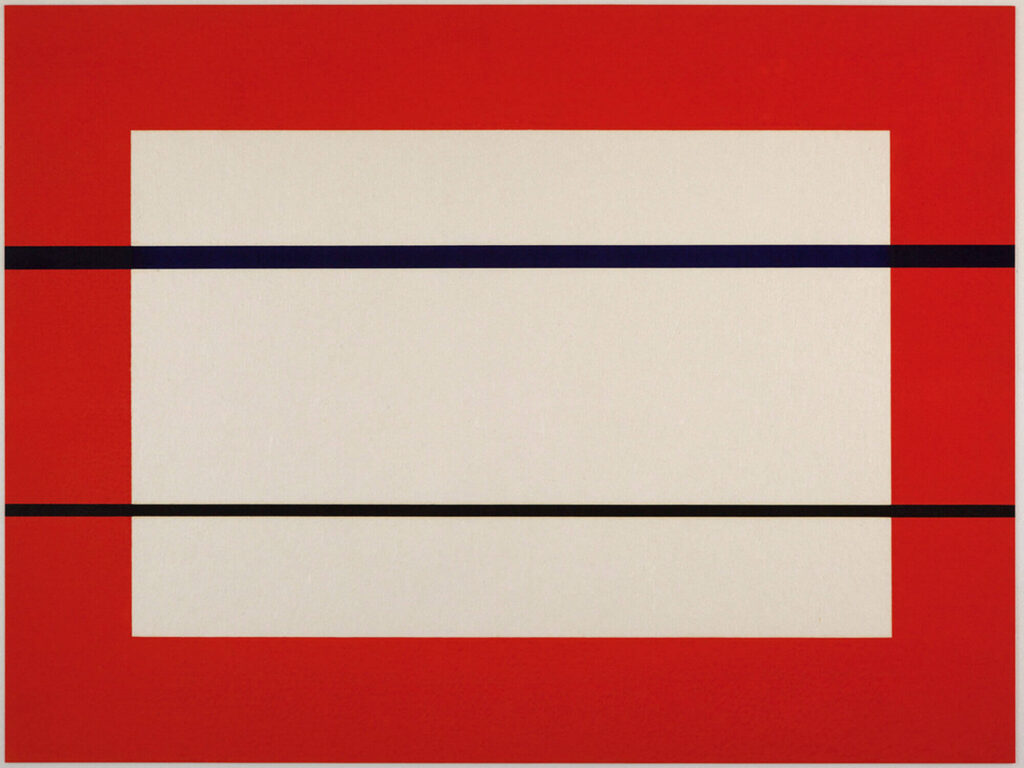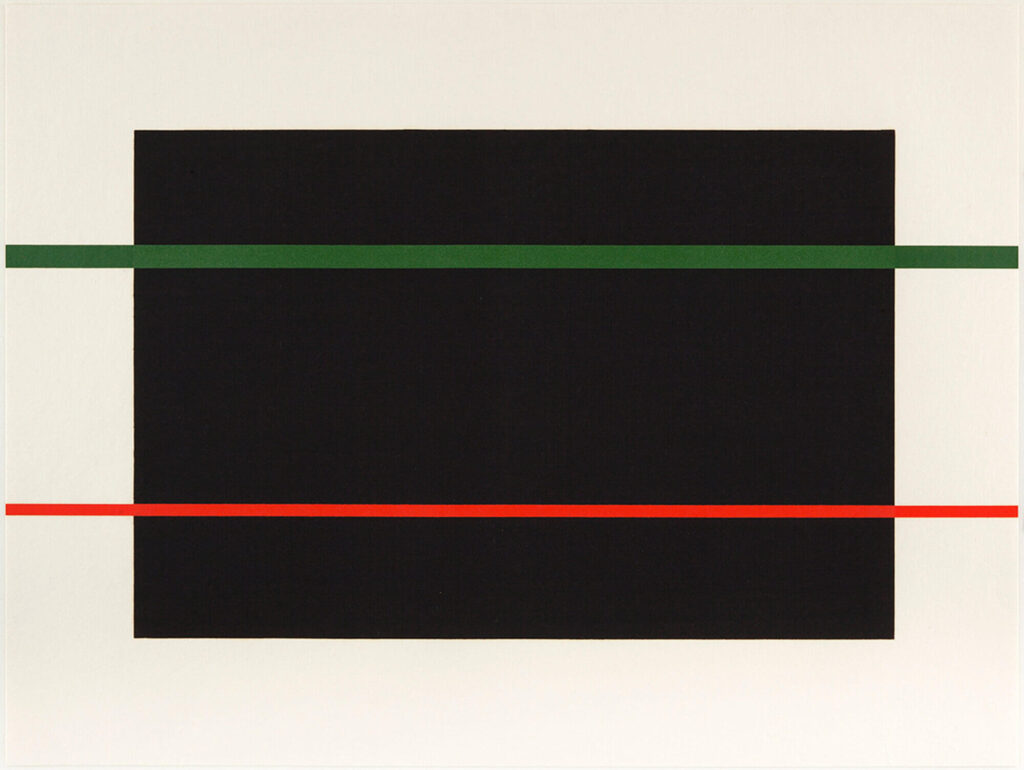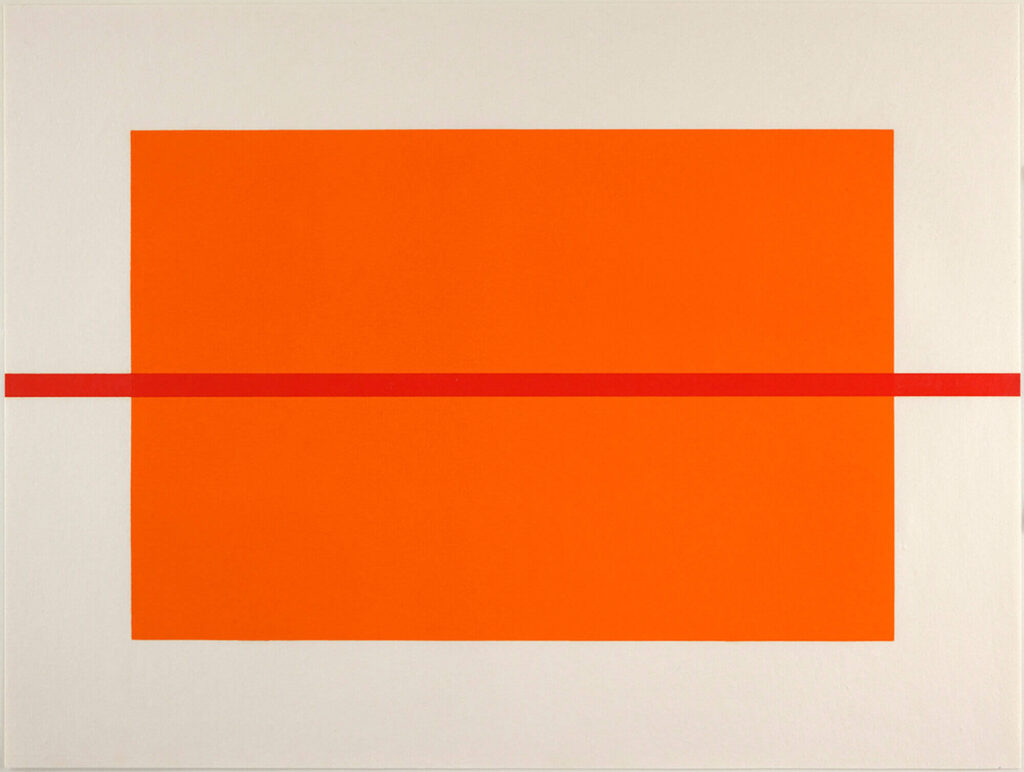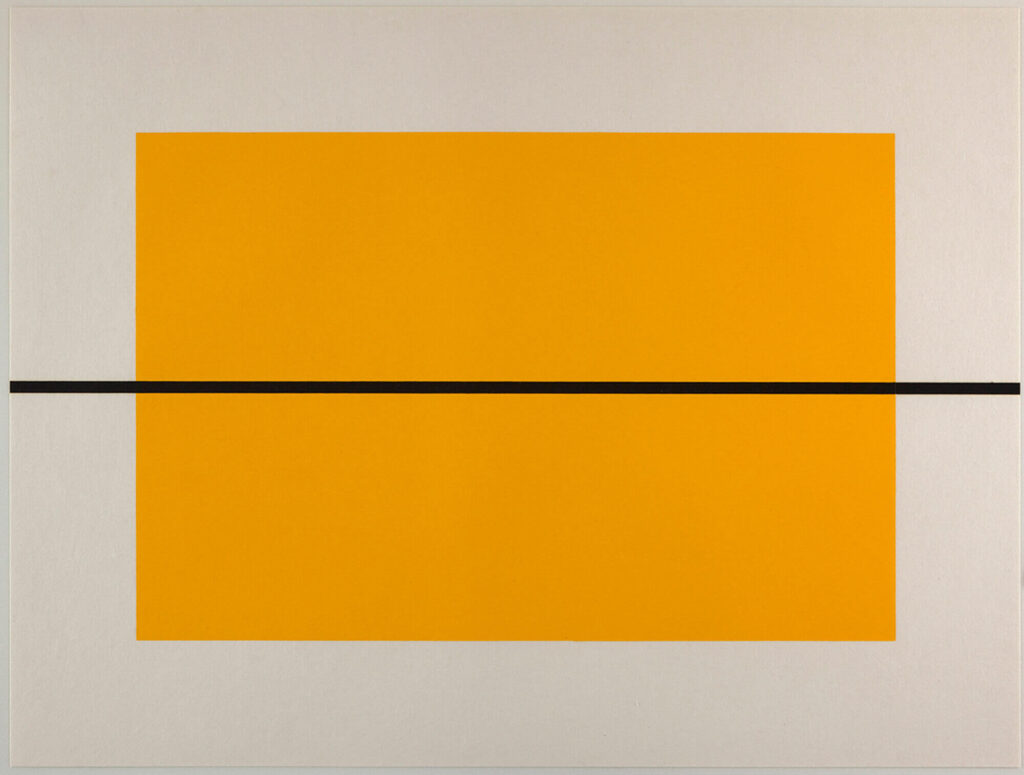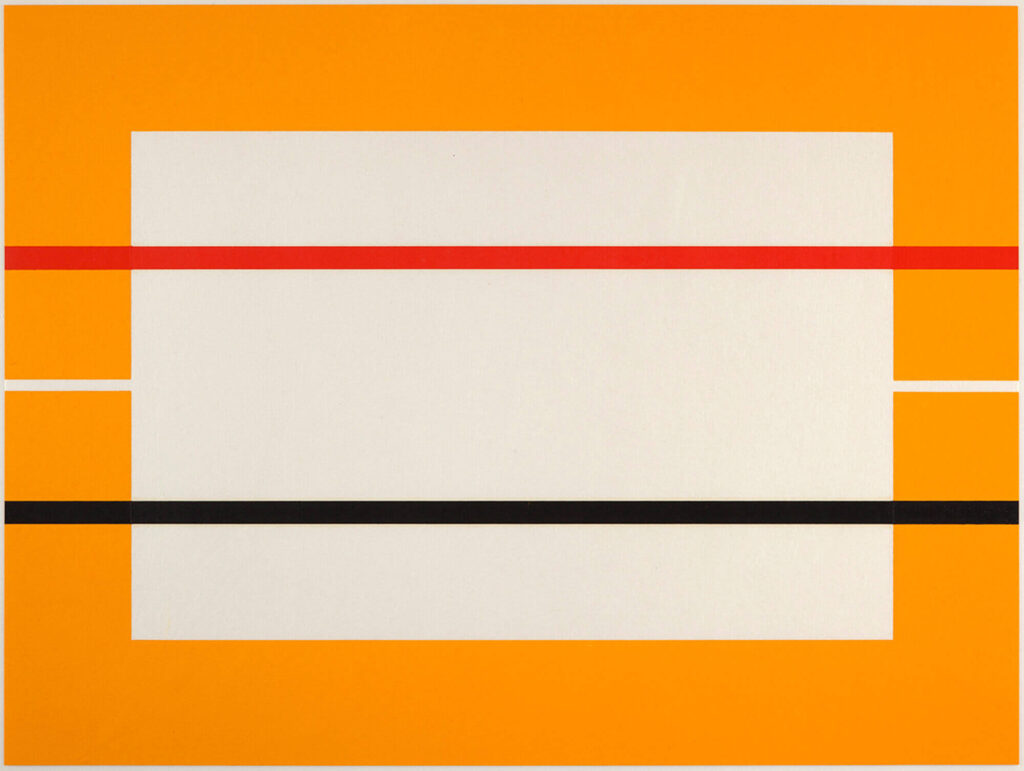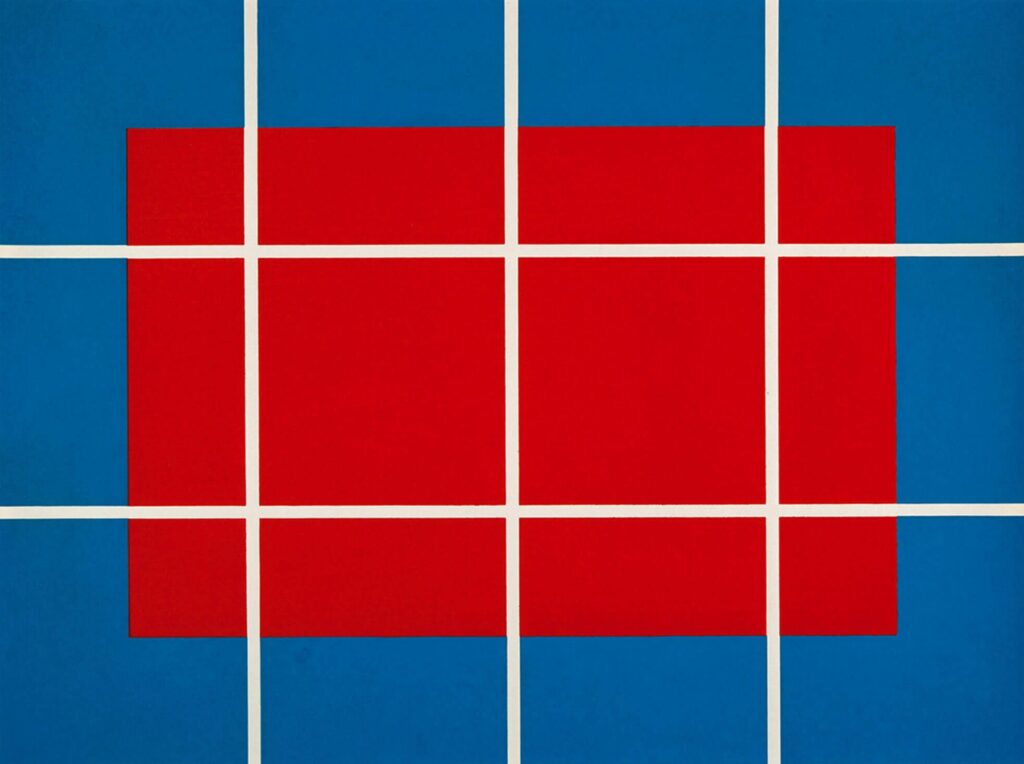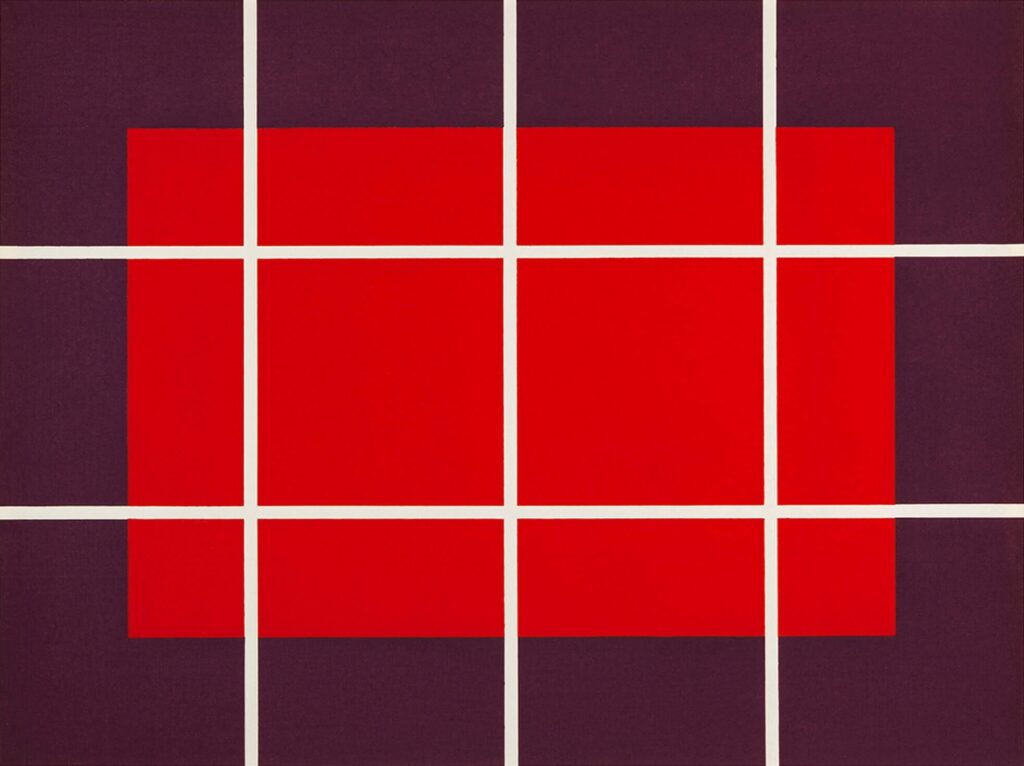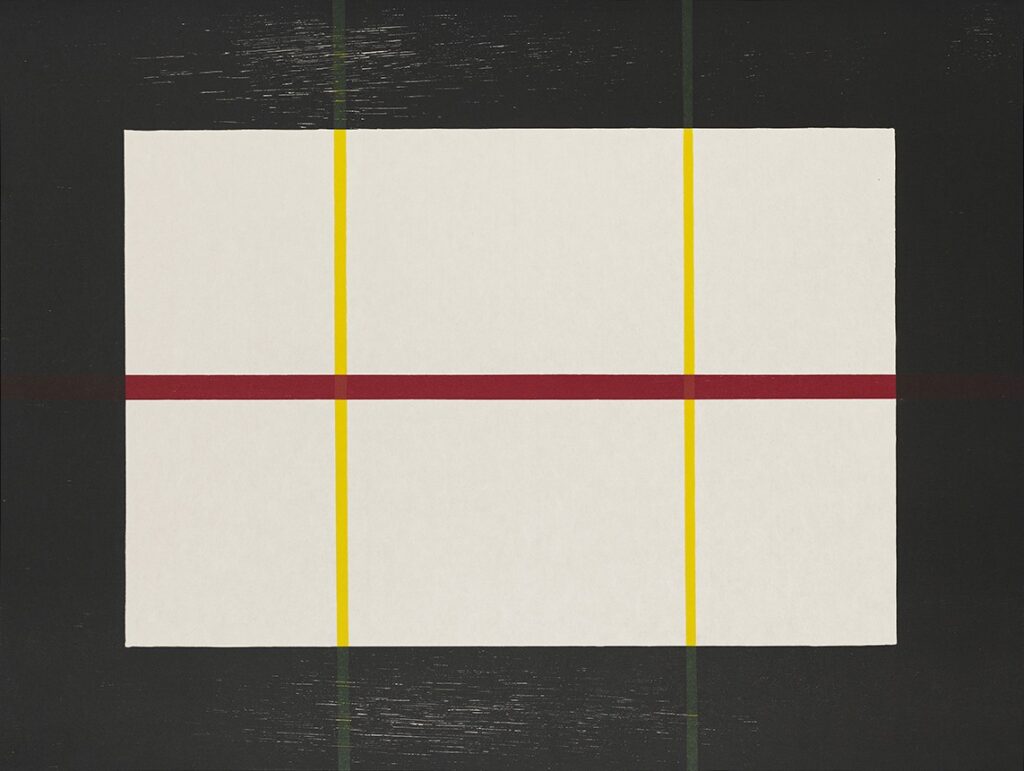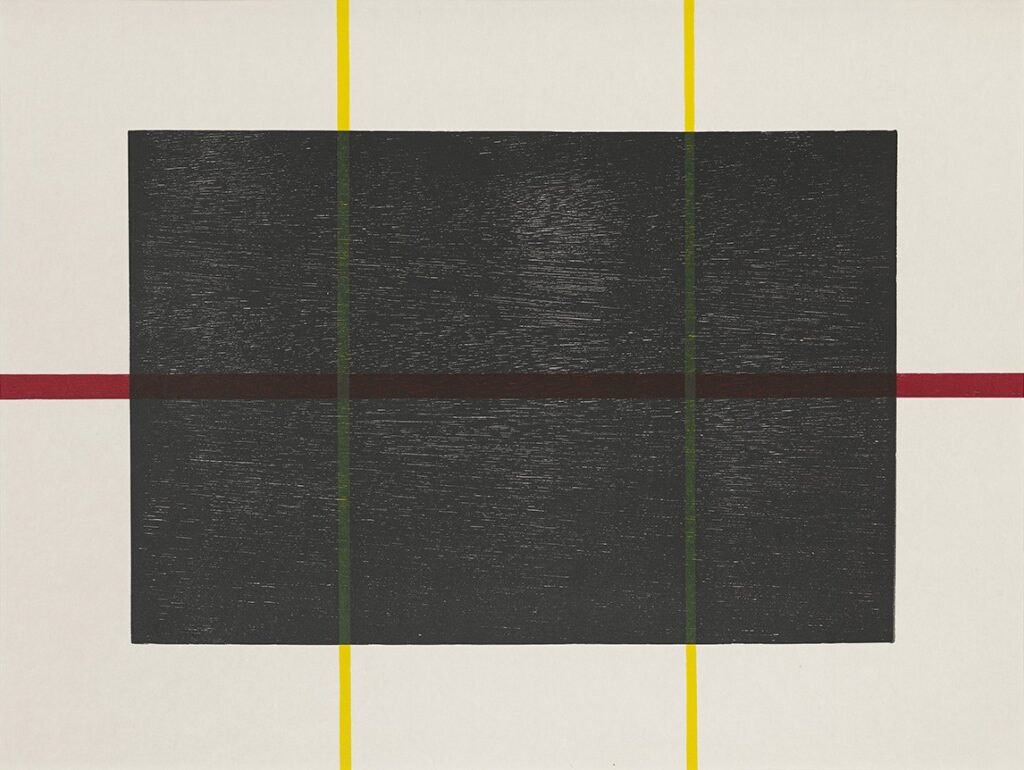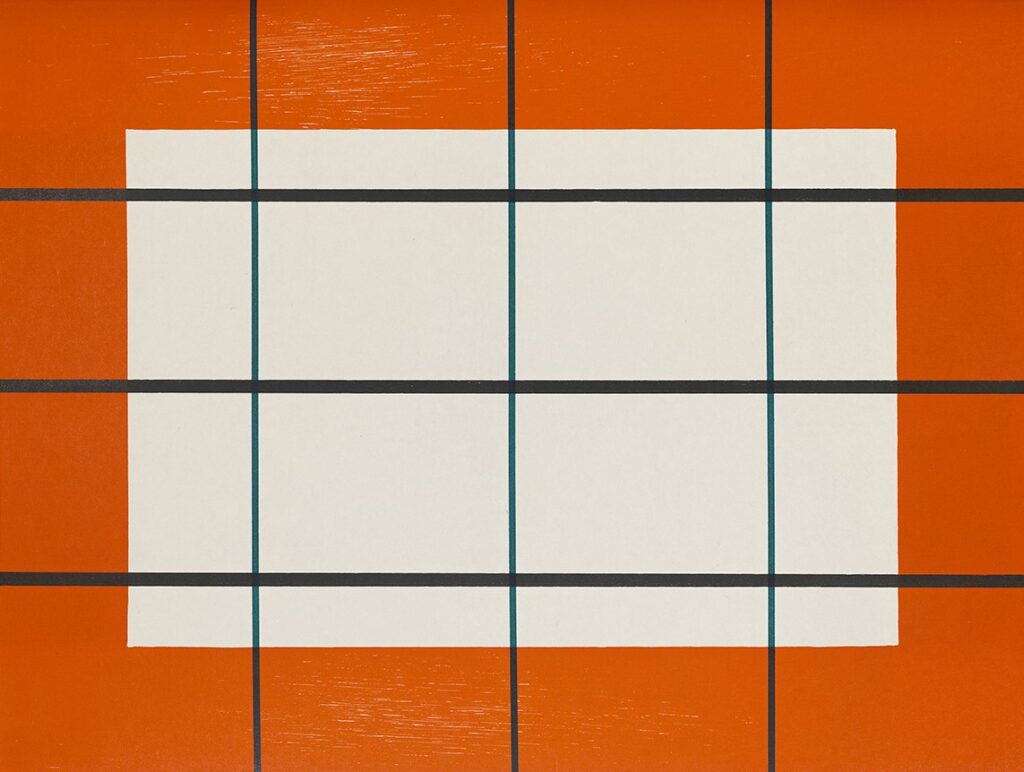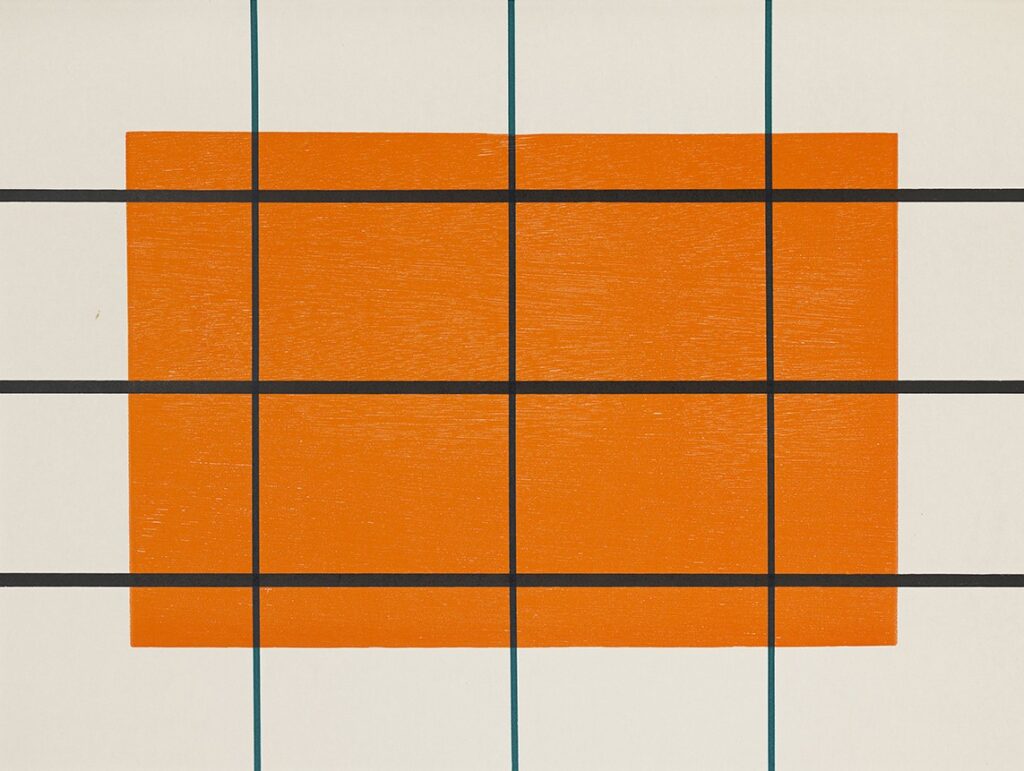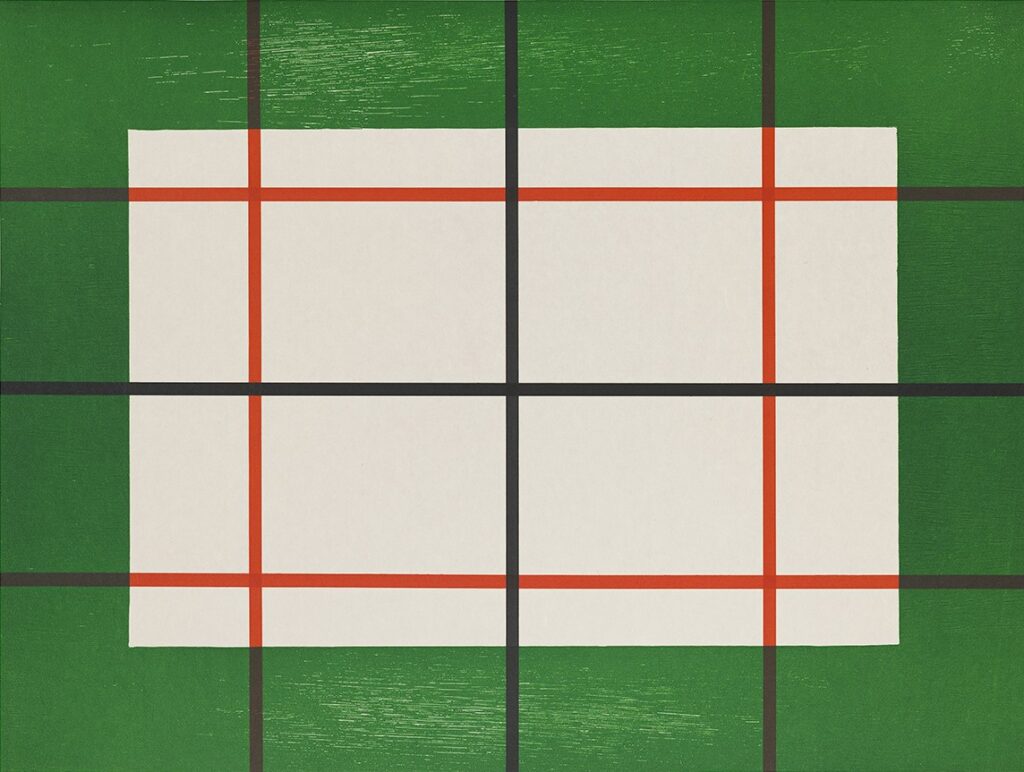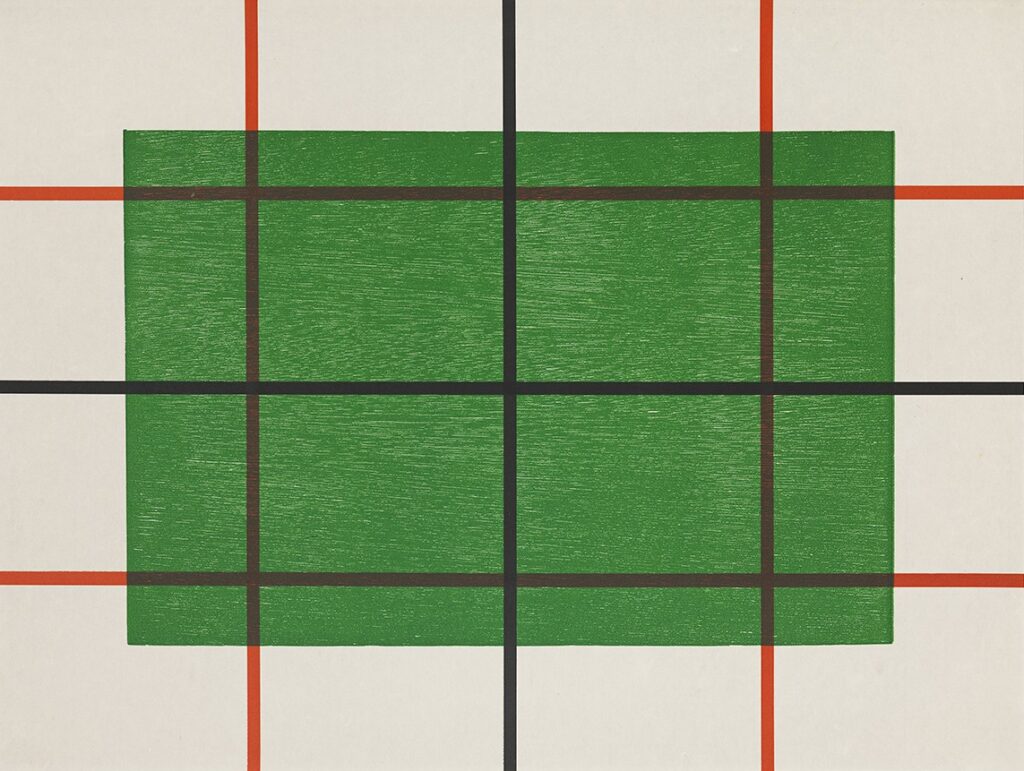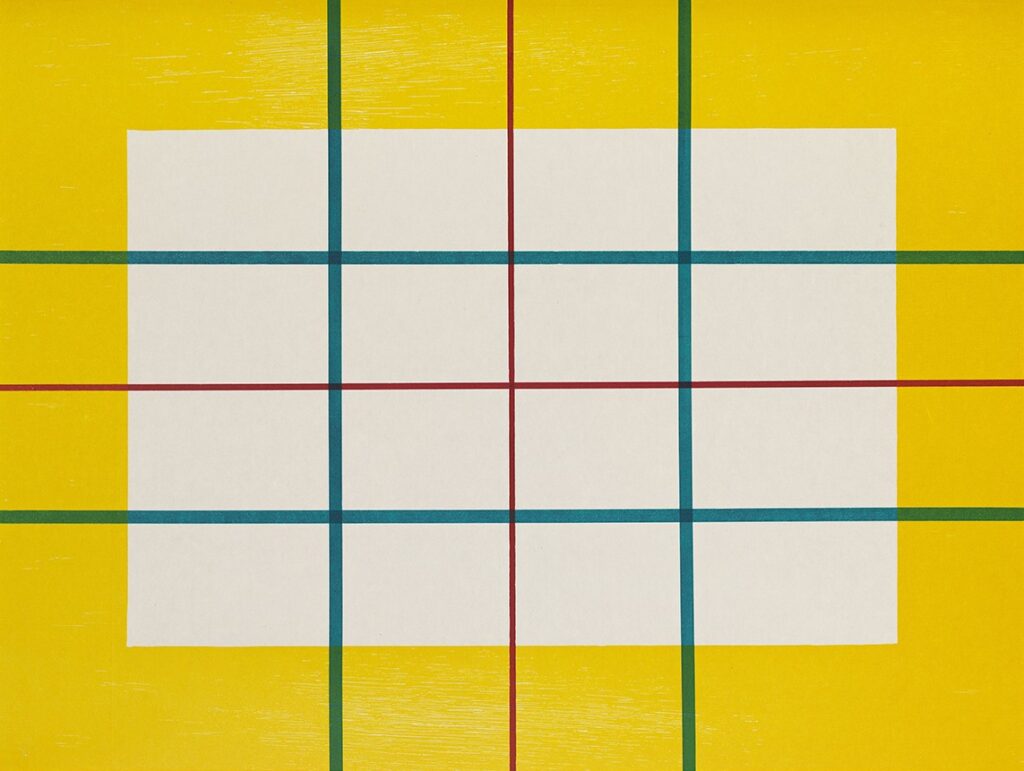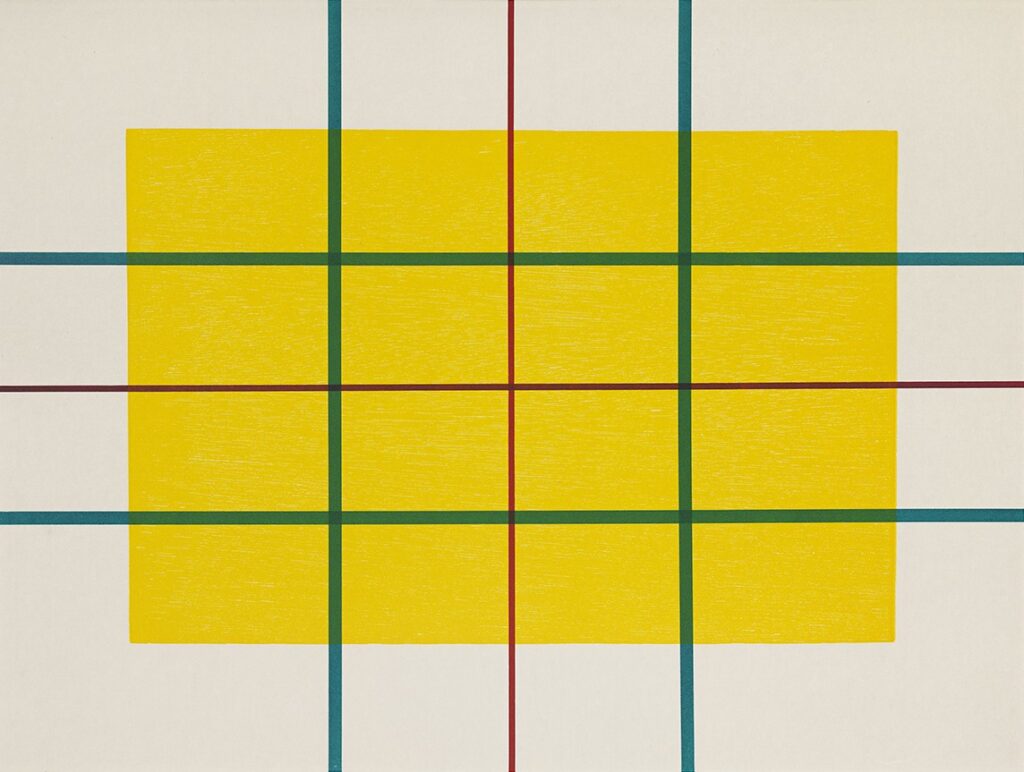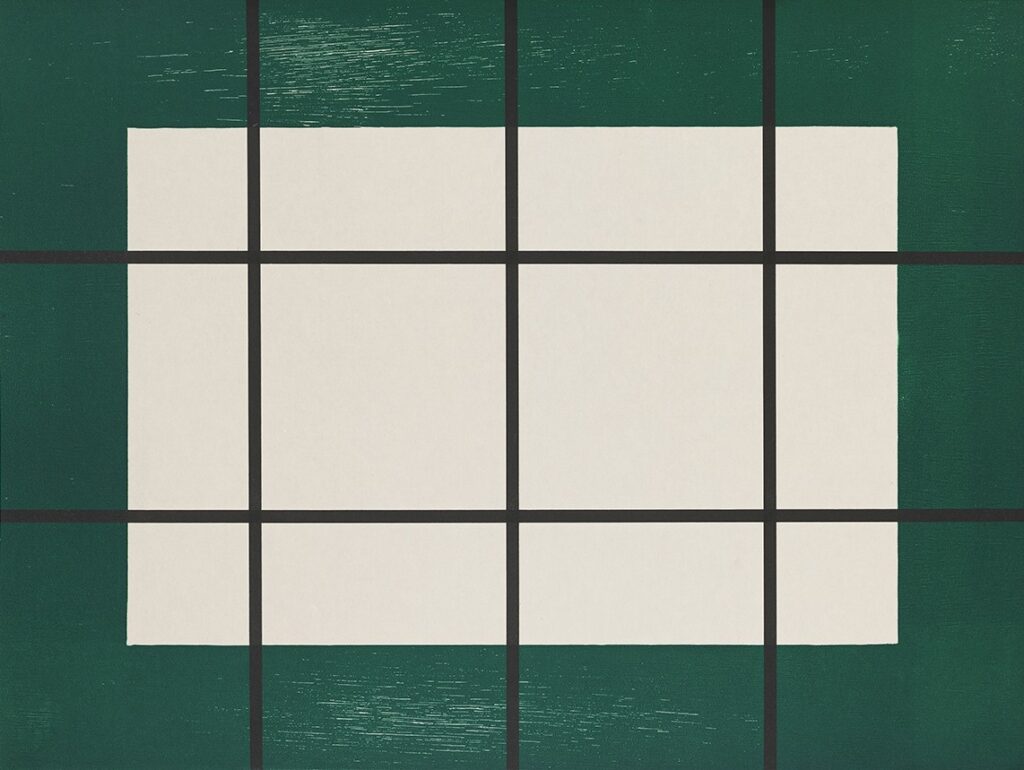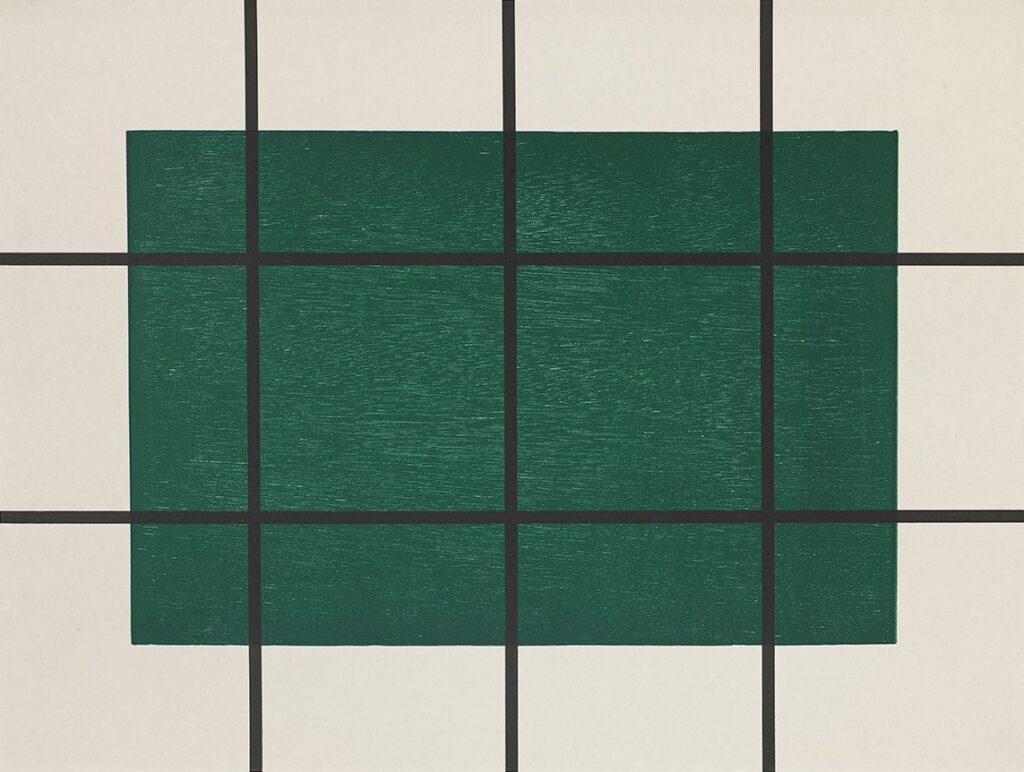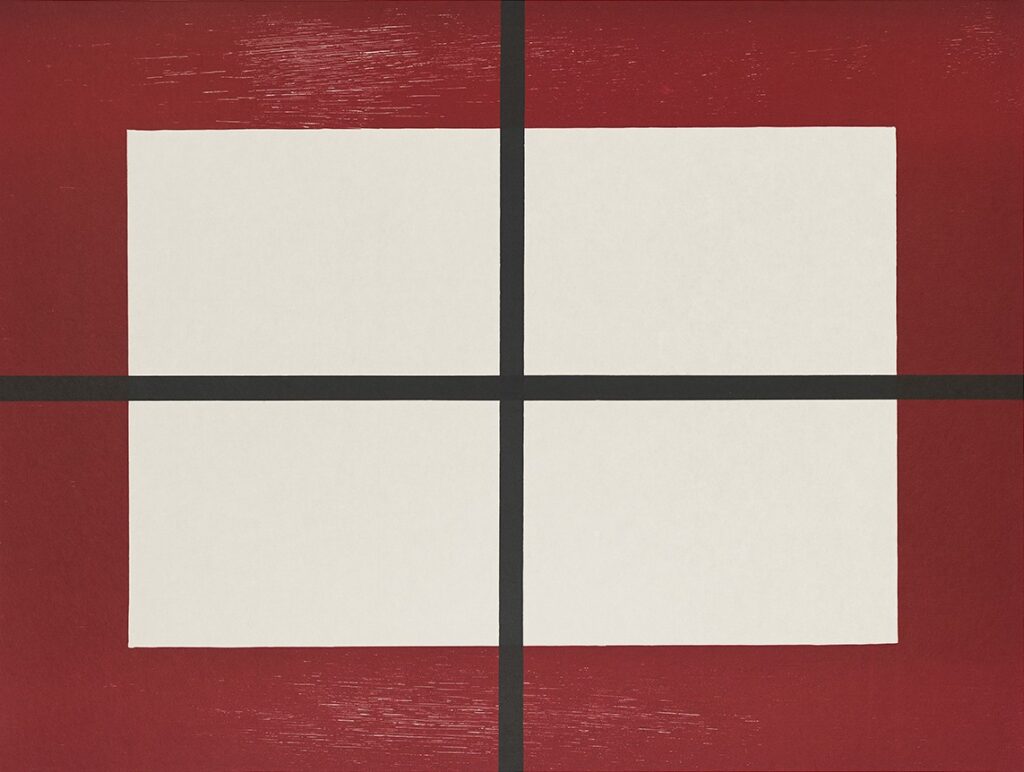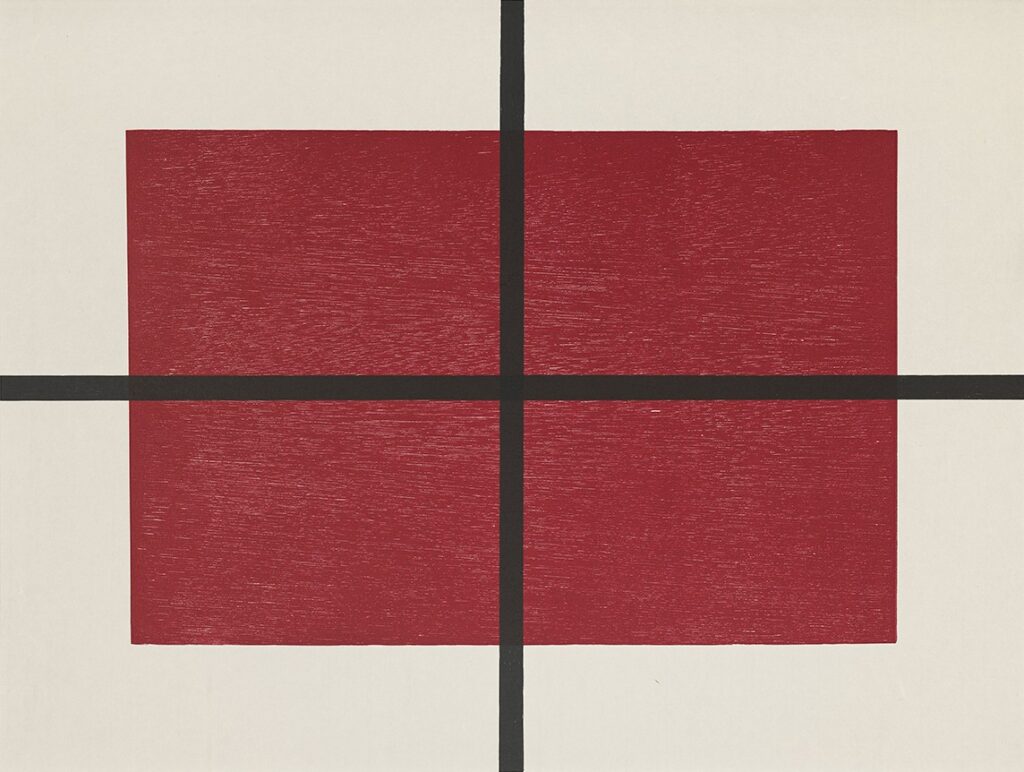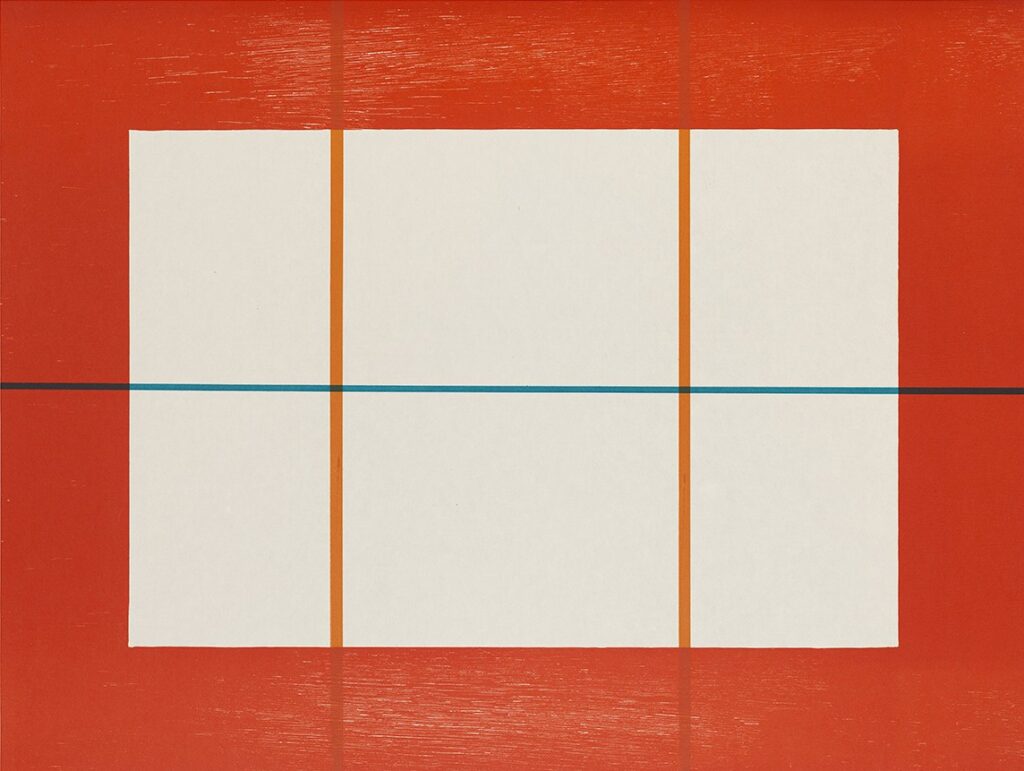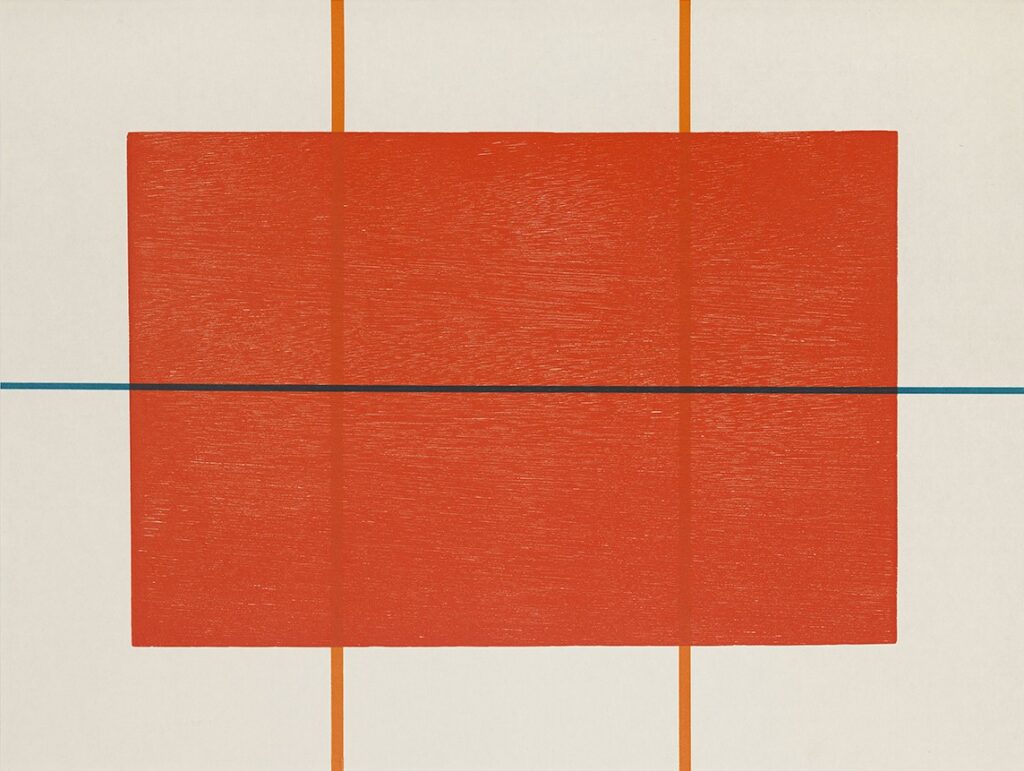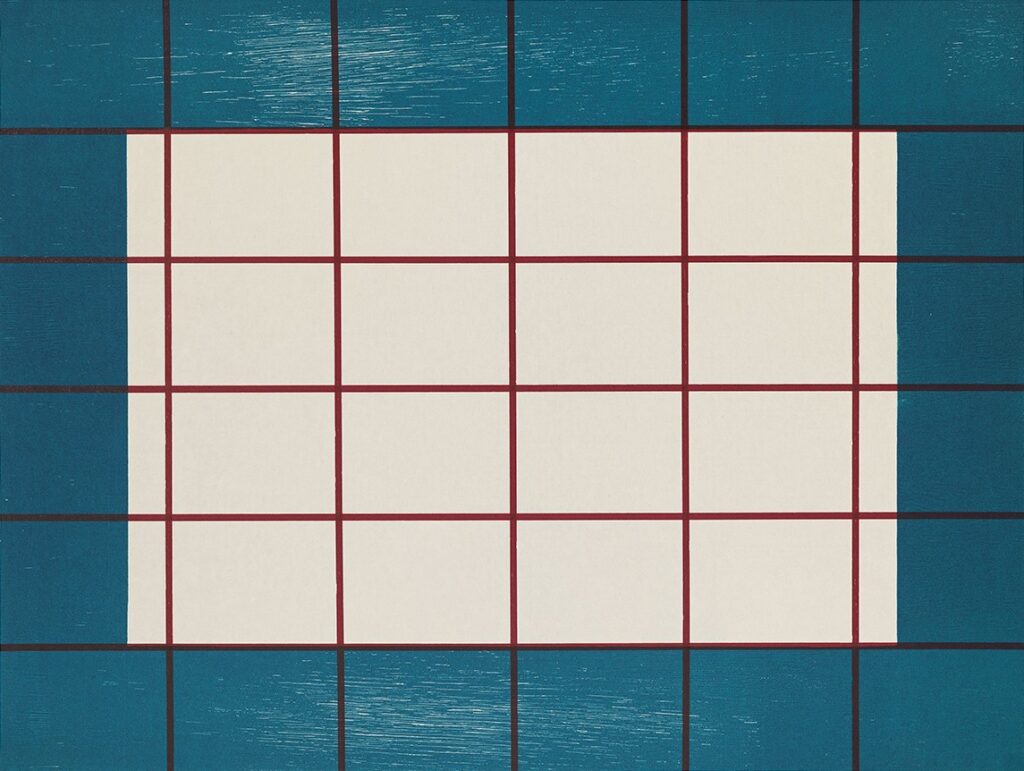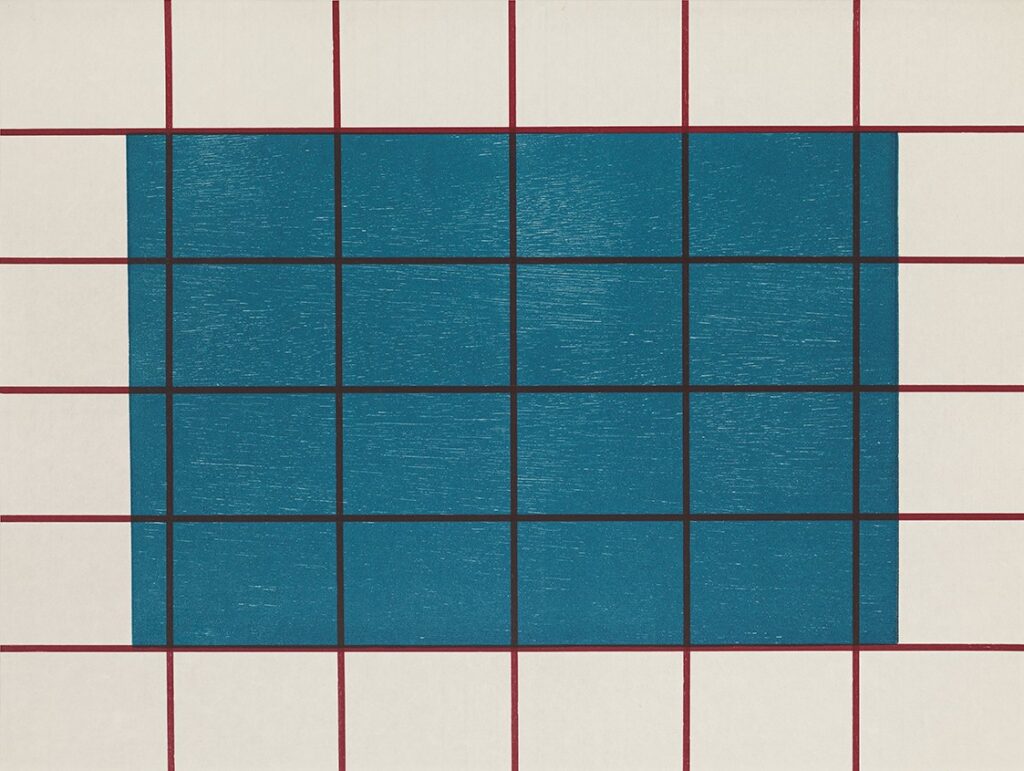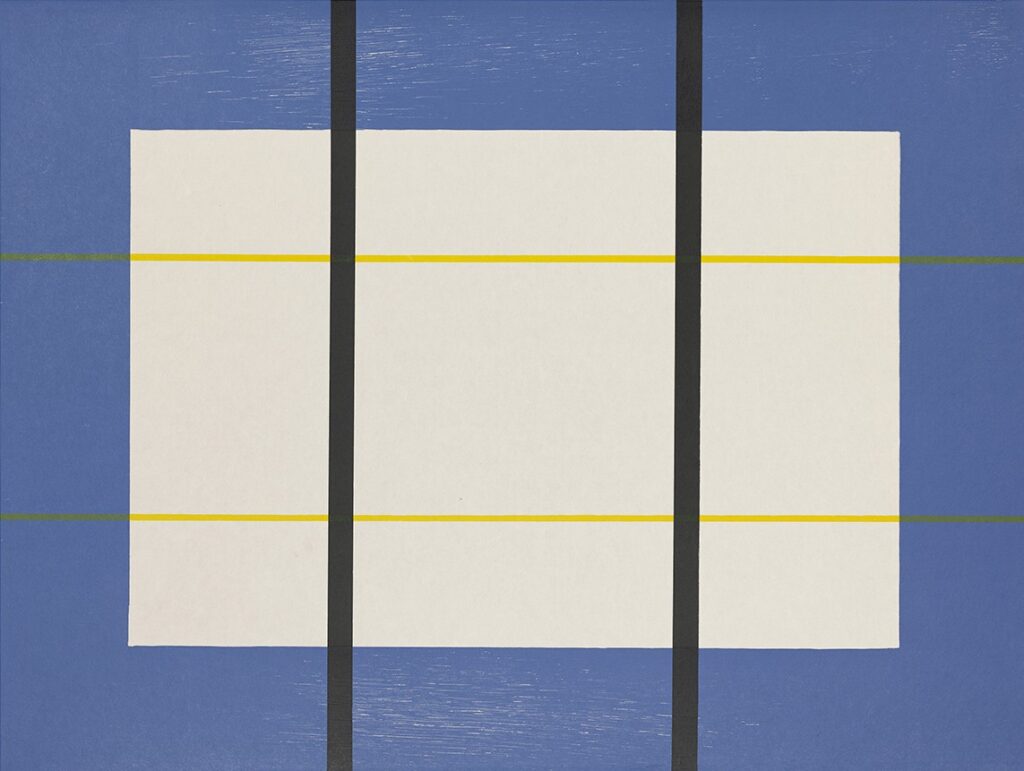Over the course of four decades, Donald Judd created hundreds of prints using aquatint, etching, and screen print techniques though the woodcut was his primary print medium. As a printmaker, Judd investigated many of the same issues of form and color that are found in his paintings and three-dimensional works. Judd’s long-term work with prints as well as his large collection of works by master printmakers attest to his belief that printmaking is as serious an art form as painting or sculpture.
Judd studied printing techniques while at the Art Students League, and designed his first prints starting in 1951. Working first with lithographs, Judd shifted his attention to woodcuts, which became his dominant print medium as early as 1953. Throughout the 1950s, Judd’s woodcuts develop an angular and robust style. Moving away from figuration, Judd used line, first curved and then straight, repetition, shape, and color. Judd also explored screen print techniques, sometimes using different techniques to generate the same shape, such as in the case of the parallelogram, which he used in his sculpture as well as in woodcuts, etchings, and aquatints.
Both Judd’s late paintings from the early 1960s, and his early prints from the same time period demonstrate an interest in lines and intervals and even share identical shapes. In 1963, Judd’s father, Roy C. Judd, created the woodblocks for what became Judd’s first large-scale series of prints.
A comprehensive catalogue of Judd’s prints, Donald Judd, Prints and Works in Editions: A Catalogue Raisonné, edited by Jörg Schellmann and Mariette Josephus Jitta, was published in 1993.
